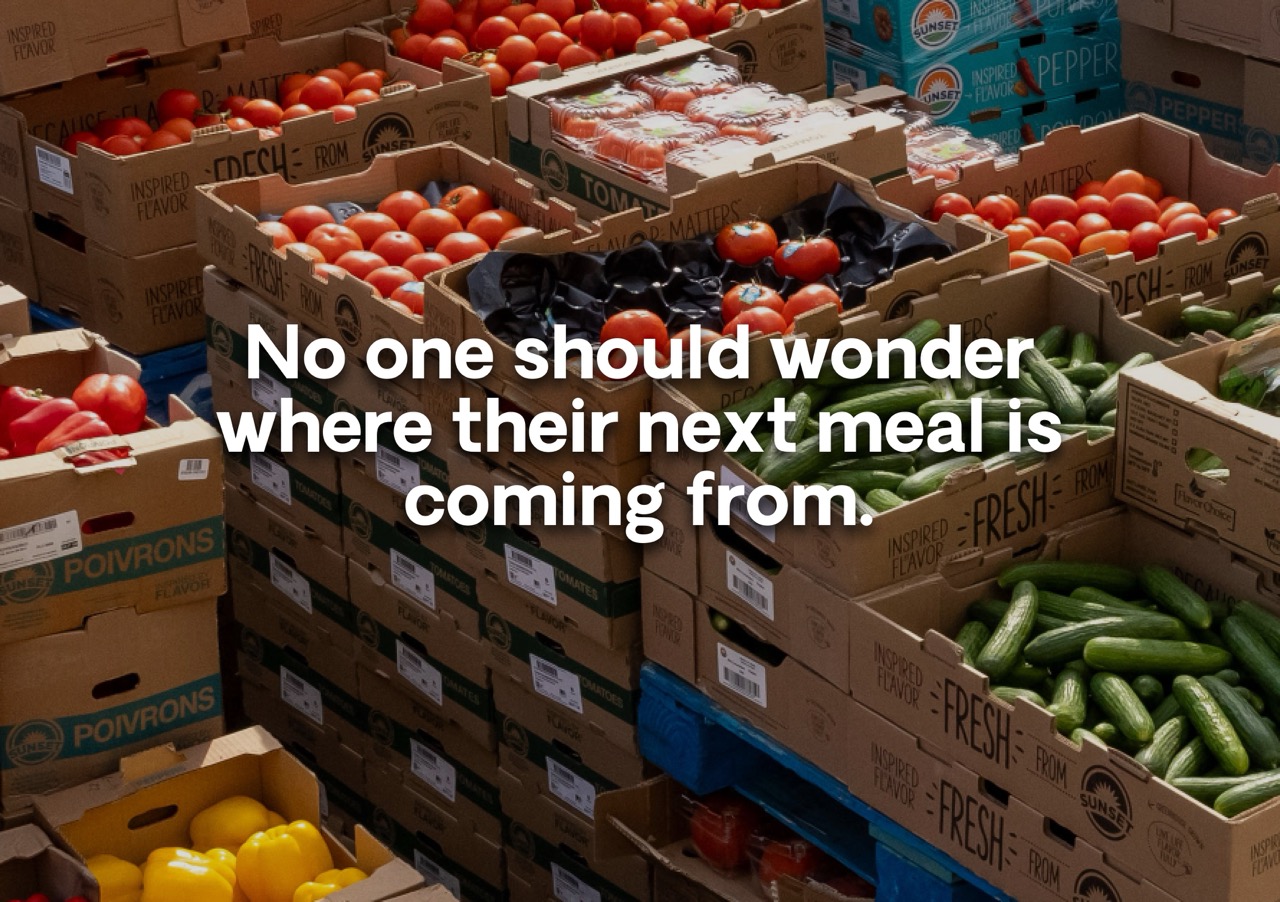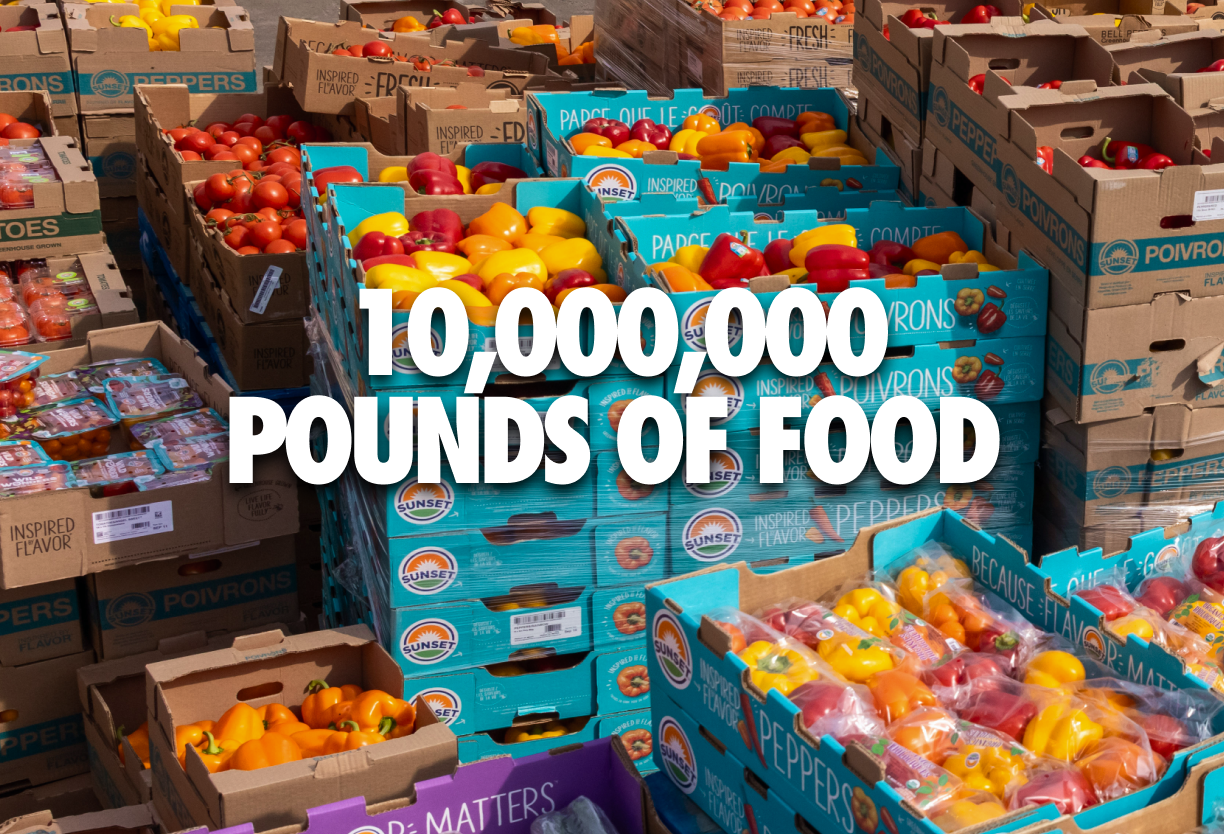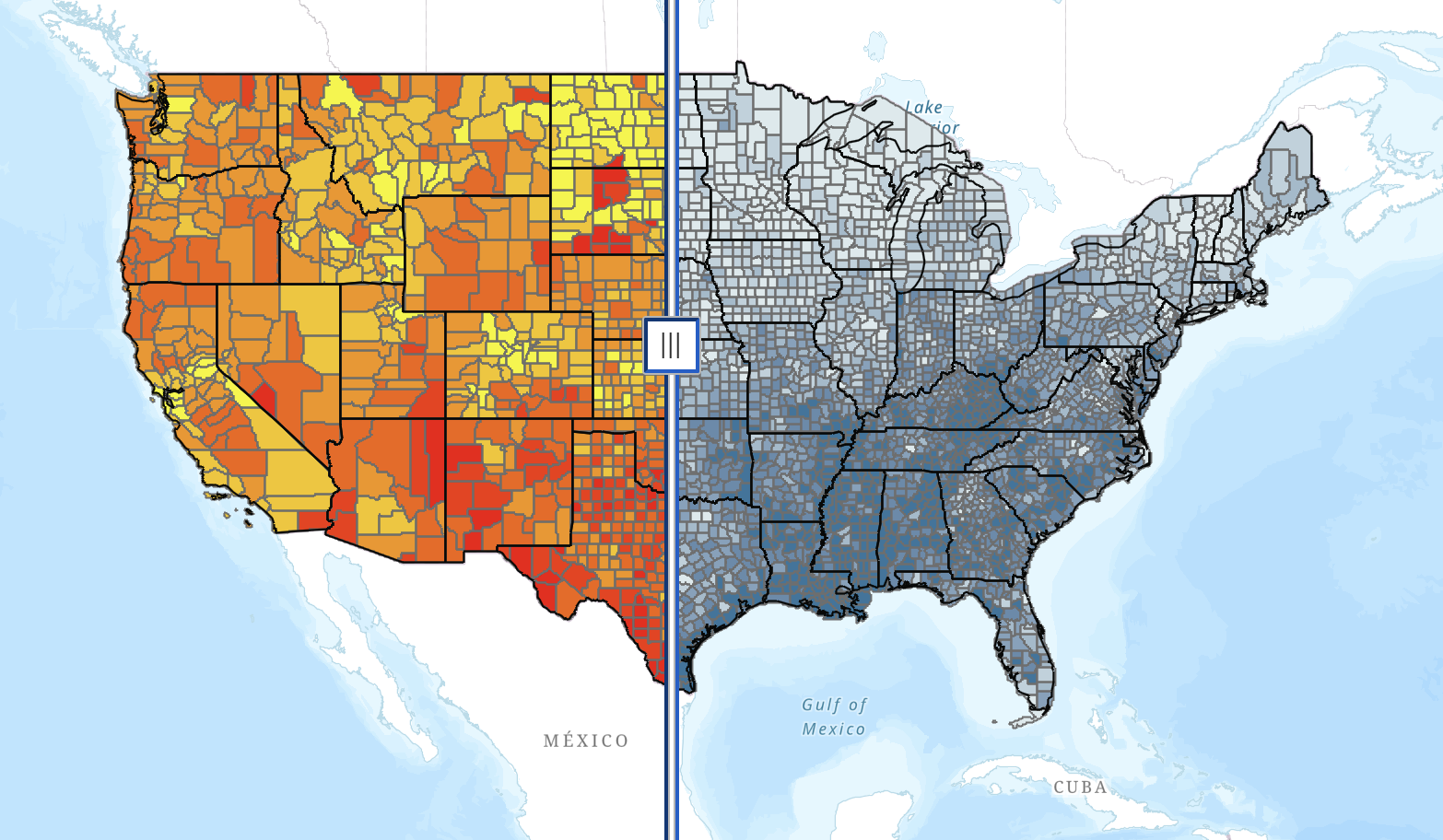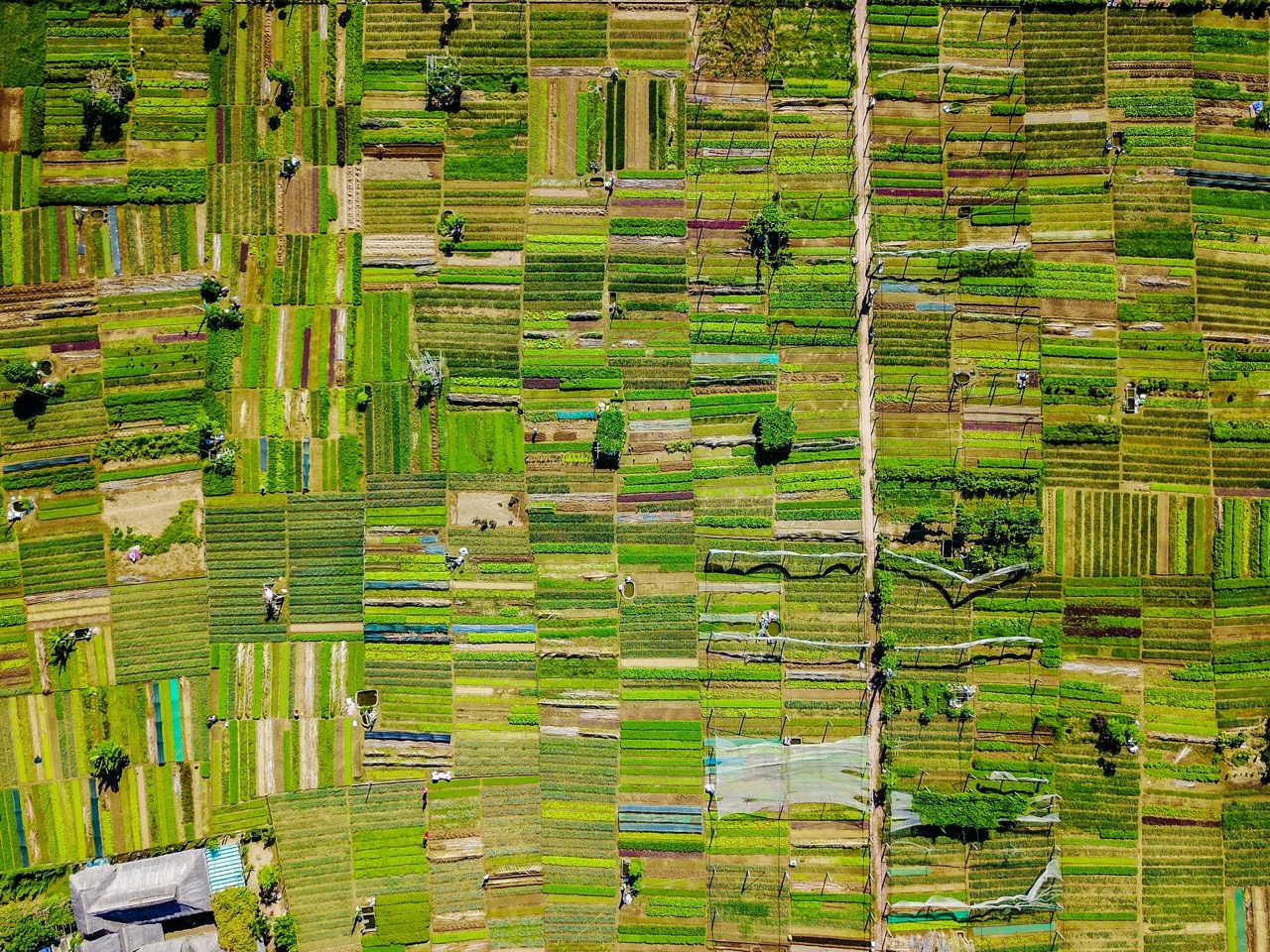Navajo Nation, an American Indian territory that spans over Utah, Arizona, and New Mexico just surpassed New York for the highest number of COVID-19 cases in the United States. As of today, 4,000 positive cases have been confirmed in Navajo Nation. Last weekend, The Farmlink Project facilitated the delivery of over 40,000 pounds of potatoes that would have otherwise gone to waste, from Desert Ridge Farm, in Moses Lake, Washington, to the Navajo Nation communities in New Mexico and Arizona. The Navajo Nation Christian Response team received and distributed these potatoes throughout the reservation with the help of several other local organizations.
Nathan Lynch, from the Navajo Nation Christian Response Team, laid out three main factors for why Navajo Nation has been hit particularly hard by the pandemic: “To start, what most people don’t know is that McKinley county was already in a flu pandemic during January and February.” Due to this pre-existing flu, many Navajo people were still suffering from low immune systems when COVID-19 hit. Secondly, the Navajo culture embraces multi-generational housing, with three-four different generations all living under the same roof. Instead of one person testing positive, this style of living created blooms of ten-twelve positive cases in every household. Finally, 46.5 percent of the community lives beneath the national poverty level, and one-third of the houses on the reservation lack electricity and running water. “A flu pandemic. Multiple generations living together in the same house. A depressed economy with limited running water. Throw these factors together and throw COVID-19 at it—it’s a perfect storm.”
Nathan and the Navajo Nation Christian Response Team are responsible for providing 65 percent of Navajo Nation’s population—roughly 230,000 people—with aid. However, given their limited supplies and means of transportation, they work directly with pastors in Navajo communities to distribute care packages to those most in need. Nathan describes their technique of targeted distribution; the pastors identify recipients through the communities' senior centers and health foundations. “Our food reaches the grandmother who lives 20 miles off the main roadway, up in the canyon.”
The care packages include staple items that elderly Navajo people are familiar with: water, rice, flour, potatoes, beans, and lard. Nathan said that potatoes—really any produce—are a luxury. Sometimes these care packages arrive just in time to remote, elderly individuals who have not eaten in three days. But staples in a time of crisis only sustain the living for so long. Nathan paints a picture of the worst case scenario: pastors walk into homes and find elderly people deceased. After having been sent home from the hospital to self-quarantine, they run out of food with no means of acquiring more. Nathan describes signs on their doors, indicating they’ve tested positive for COVID-19. The signs, like numbers quantifying deaths to coronavirus, say little about the people inside, including their experiences of isolation from family members and the larger community.
Scenes of tragedy across Navajo communities carry historical precedent, including displacement from land, native language suppression, and the separation of children from families. The coronavirus also brings to light a pattern of unequal distribution of resources to the Navajo people that has taken place over centuries. In an interview with the Washington Post on May 16, Navajo Nation President, Jonathan Nez, shared that the Navajo hadn’t received any of the $8 billion that the March 18 Cares Act promised to Native American communities.
In the absence of government aid, organizations like Strengthening Nations, McKinley County Mutual Aid, Indigenous Lifeways and New Mexico First Born have stepped up to support the Navajo communities. Strengthening Nations provides shelter, rehabilitation and mentorship programs and other services to survivors and offenders of domestic and family violence. The quarantine has exacerbated mental health problems and in turn, escalated cases of family violence. The organization has seen an influx of individuals and families seeking shelter, said Christian Vazquez of Strengthening Nations.
Christian also offered glimmers of hope. Offenders have come to Strengthening Nations to ask for volunteer work. Last week, Strengthening Nations and volunteers distributed 800 boxes of food and supplies to single parents and elders. Christian reiterated the scarcity of basic produce, like potatoes. “We don’t usually have [potatoes] in that bulk and wow, that was awesome,” he said, referencing the truckload of potatoes that arrived last weekend. “The produce is usually the first thing to go.”
“It’s really fulfilling getting things to people who really need them,” Christian said, expressing a sentiment that motivates us at The Farmlink Project. Potatoes rise above the level of a staple; they nourish people and help build connections between communities, from Washington to New Mexico and Arizona. These kinds of connections provide hope—even for those fighting personal battles—in the time of COVID-19.
< Back

Navajo Nation, an American Indian territory that spans over Utah, Arizona, and New Mexico just surpassed New York for the highest number of COVID-19 cases in the United States. As of today, 4,000 positive cases have been confirmed in Navajo Nation. Last weekend, The Farmlink Project facilitated the delivery of over 40,000 pounds of potatoes that would have otherwise gone to waste, from Desert Ridge Farm, in Moses Lake, Washington, to the Navajo Nation communities in New Mexico and Arizona. The Navajo Nation Christian Response team received and distributed these potatoes throughout the reservation with the help of several other local organizations.
Nathan Lynch, from the Navajo Nation Christian Response Team, laid out three main factors for why Navajo Nation has been hit particularly hard by the pandemic: “To start, what most people don’t know is that McKinley county was already in a flu pandemic during January and February.” Due to this pre-existing flu, many Navajo people were still suffering from low immune systems when COVID-19 hit. Secondly, the Navajo culture embraces multi-generational housing, with three-four different generations all living under the same roof. Instead of one person testing positive, this style of living created blooms of ten-twelve positive cases in every household. Finally, 46.5 percent of the community lives beneath the national poverty level, and one-third of the houses on the reservation lack electricity and running water. “A flu pandemic. Multiple generations living together in the same house. A depressed economy with limited running water. Throw these factors together and throw COVID-19 at it—it’s a perfect storm.”
Nathan and the Navajo Nation Christian Response Team are responsible for providing 65 percent of Navajo Nation’s population—roughly 230,000 people—with aid. However, given their limited supplies and means of transportation, they work directly with pastors in Navajo communities to distribute care packages to those most in need. Nathan describes their technique of targeted distribution; the pastors identify recipients through the communities' senior centers and health foundations. “Our food reaches the grandmother who lives 20 miles off the main roadway, up in the canyon.”
The care packages include staple items that elderly Navajo people are familiar with: water, rice, flour, potatoes, beans, and lard. Nathan said that potatoes—really any produce—are a luxury. Sometimes these care packages arrive just in time to remote, elderly individuals who have not eaten in three days. But staples in a time of crisis only sustain the living for so long. Nathan paints a picture of the worst case scenario: pastors walk into homes and find elderly people deceased. After having been sent home from the hospital to self-quarantine, they run out of food with no means of acquiring more. Nathan describes signs on their doors, indicating they’ve tested positive for COVID-19. The signs, like numbers quantifying deaths to coronavirus, say little about the people inside, including their experiences of isolation from family members and the larger community.
Scenes of tragedy across Navajo communities carry historical precedent, including displacement from land, native language suppression, and the separation of children from families. The coronavirus also brings to light a pattern of unequal distribution of resources to the Navajo people that has taken place over centuries. In an interview with the Washington Post on May 16, Navajo Nation President, Jonathan Nez, shared that the Navajo hadn’t received any of the $8 billion that the March 18 Cares Act promised to Native American communities.
In the absence of government aid, organizations like Strengthening Nations, McKinley County Mutual Aid, Indigenous Lifeways and New Mexico First Born have stepped up to support the Navajo communities. Strengthening Nations provides shelter, rehabilitation and mentorship programs and other services to survivors and offenders of domestic and family violence. The quarantine has exacerbated mental health problems and in turn, escalated cases of family violence. The organization has seen an influx of individuals and families seeking shelter, said Christian Vazquez of Strengthening Nations.
Christian also offered glimmers of hope. Offenders have come to Strengthening Nations to ask for volunteer work. Last week, Strengthening Nations and volunteers distributed 800 boxes of food and supplies to single parents and elders. Christian reiterated the scarcity of basic produce, like potatoes. “We don’t usually have [potatoes] in that bulk and wow, that was awesome,” he said, referencing the truckload of potatoes that arrived last weekend. “The produce is usually the first thing to go.”
“It’s really fulfilling getting things to people who really need them,” Christian said, expressing a sentiment that motivates us at The Farmlink Project. Potatoes rise above the level of a staple; they nourish people and help build connections between communities, from Washington to New Mexico and Arizona. These kinds of connections provide hope—even for those fighting personal battles—in the time of COVID-19.
 < Back
< BackNavajo Nation
Utah, Arizona, and New Mexico
Navajo Nation, an American Indian territory that spans over Utah, Arizona, and New Mexico just surpassed New York for the highest number of COVID-19 cases in the United States. As of today, 4,000 positive cases have been confirmed in Navajo Nation. Last weekend, The Farmlink Project facilitated the delivery of over 40,000 pounds of potatoes that would have otherwise gone to waste, from Desert Ridge Farm, in Moses Lake, Washington, to the Navajo Nation communities in New Mexico and Arizona. The Navajo Nation Christian Response team received and distributed these potatoes throughout the reservation with the help of several other local organizations.
Nathan Lynch, from the Navajo Nation Christian Response Team, laid out three main factors for why Navajo Nation has been hit particularly hard by the pandemic: “To start, what most people don’t know is that McKinley county was already in a flu pandemic during January and February.” Due to this pre-existing flu, many Navajo people were still suffering from low immune systems when COVID-19 hit. Secondly, the Navajo culture embraces multi-generational housing, with three-four different generations all living under the same roof. Instead of one person testing positive, this style of living created blooms of ten-twelve positive cases in every household. Finally, 46.5 percent of the community lives beneath the national poverty level, and one-third of the houses on the reservation lack electricity and running water. “A flu pandemic. Multiple generations living together in the same house. A depressed economy with limited running water. Throw these factors together and throw COVID-19 at it—it’s a perfect storm.”
Nathan and the Navajo Nation Christian Response Team are responsible for providing 65 percent of Navajo Nation’s population—roughly 230,000 people—with aid. However, given their limited supplies and means of transportation, they work directly with pastors in Navajo communities to distribute care packages to those most in need. Nathan describes their technique of targeted distribution; the pastors identify recipients through the communities' senior centers and health foundations. “Our food reaches the grandmother who lives 20 miles off the main roadway, up in the canyon.”
The care packages include staple items that elderly Navajo people are familiar with: water, rice, flour, potatoes, beans, and lard. Nathan said that potatoes—really any produce—are a luxury. Sometimes these care packages arrive just in time to remote, elderly individuals who have not eaten in three days. But staples in a time of crisis only sustain the living for so long. Nathan paints a picture of the worst case scenario: pastors walk into homes and find elderly people deceased. After having been sent home from the hospital to self-quarantine, they run out of food with no means of acquiring more. Nathan describes signs on their doors, indicating they’ve tested positive for COVID-19. The signs, like numbers quantifying deaths to coronavirus, say little about the people inside, including their experiences of isolation from family members and the larger community.
Scenes of tragedy across Navajo communities carry historical precedent, including displacement from land, native language suppression, and the separation of children from families. The coronavirus also brings to light a pattern of unequal distribution of resources to the Navajo people that has taken place over centuries. In an interview with the Washington Post on May 16, Navajo Nation President, Jonathan Nez, shared that the Navajo hadn’t received any of the $8 billion that the March 18 Cares Act promised to Native American communities.
In the absence of government aid, organizations like Strengthening Nations, McKinley County Mutual Aid, Indigenous Lifeways and New Mexico First Born have stepped up to support the Navajo communities. Strengthening Nations provides shelter, rehabilitation and mentorship programs and other services to survivors and offenders of domestic and family violence. The quarantine has exacerbated mental health problems and in turn, escalated cases of family violence. The organization has seen an influx of individuals and families seeking shelter, said Christian Vazquez of Strengthening Nations.
Christian also offered glimmers of hope. Offenders have come to Strengthening Nations to ask for volunteer work. Last week, Strengthening Nations and volunteers distributed 800 boxes of food and supplies to single parents and elders. Christian reiterated the scarcity of basic produce, like potatoes. “We don’t usually have [potatoes] in that bulk and wow, that was awesome,” he said, referencing the truckload of potatoes that arrived last weekend. “The produce is usually the first thing to go.”
“It’s really fulfilling getting things to people who really need them,” Christian said, expressing a sentiment that motivates us at The Farmlink Project. Potatoes rise above the level of a staple; they nourish people and help build connections between communities, from Washington to New Mexico and Arizona. These kinds of connections provide hope—even for those fighting personal battles—in the time of COVID-19.

.png)







.svg)
.svg)
.svg)